Macro Calculator
This free, easy-to-use macro calculator gives you your optimal macronutrients and calories. It’s a weight loss or muscle gain calculator for both women and men.
Combine with macro counting or flexible dieting to reach your goals faster.
How to get leaner and stronger?
Our comprehensive macro-based fat loss program shows you how. Learn more
How do macros work?
The foods we eat are made up of three macros (macronutrients). These are carbohydrates (carbs), protein, and fat.
Chicken is high in protein but has no carbs; rice is high in carbs but has very little fat or protein. The three macronutrients provide the body with energy and raw materials for growth and repair.
By calculating the appropriate daily calorie amount for you, we can then break this down into the best macronutrient ratios to achieve weight loss.
Basic steps for macro counting
- Enter details into the calculator
Make sure to choose the correct goal. - Take note of your calories and macros
These will be the targets you are aiming for each day. - Track your macros
Use an app or pre-plan your meals. - Measure results
Don’t use basic weight scales.
Use proper body composition scales (we recommend Renpho) to measure fat and muscle mass changes.
What is a good macro ratio for fat loss or muscle gain?
Your macros should be based on your Total Daily Energy Expenditure (TDEE) and goals.
The calculator defaults to the best macro ratio proven to work for most people.
This ratio is:
- 30% fat
- Protein is 0.65 grams per pound of body weight,
- The remainder is carbs.
Depending on your goal, this will be either a calorie deficit or a surplus.
You can go further and make more adjustments: Perhaps you’re an extreme endomorph and do better with fewer carbs. Or perhaps you have one kidney and need to eat less protein.
You can fine-tune your results with a bit of math. See how to change your macros here.
What is a good protein ratio?
Rather than a percentage, proteins are based on your body weight. Our calculator has three settings:
- Moderate adjusts the ratio to 0.65 grams per pound of body weight.
This is appropriate for sedentary individuals or people with higher body fat percentages. - High is for active people with moderate strength training and an average body fat percentage.
- Maximum will set the ratio to 1 gram per pound.
This amount is good for bodybuilding and gaining muscle mass. You must be doing intense training.
Find out how to fine-tune your protein ratios when counting macros
Fat macro ratio
Set fat at 30% of daily energy expenditure.
Most people do very well with this amount of fat. See more about choosing the best macro fats. Because of high-fat diets like keto, many people are now eating more fat than they need to.
Carbohydrate macro ratio
Once you’ve calculated protein and fat, the remainder of your daily calories should be from carbohydrates.
Carbs fuel your body and workouts – and are the body’s preferred energy source.
If you are coming from a low-carb background, this may seem high. However, according to respected nutritional research, this is a moderate amount of carbs.
If you are eating according to your TDEE, the notion that carbs cause weight gain or stop fat loss is incorrect.
Using as a Calorie Deficit Calculator
As a weight loss calculator, this tool establishes a safe calorie deficit only.
The Lose option puts you in a 20% calorie deficit, promoting safe, steady weight loss.
The best macro ratio for body recomposition
If you want to recompose your body (lose fat and gain muscle simultaneously), then use the body recomposition calculator.
Macro ratio for maintenance
The Maintain button shows you the macro levels to maintain your current weight.
This is great if you have lost weight and don’t want to gain it back.
Macro ratio for muscle gain
The Gain button puts you in a 20% calorie surplus.
The macro breakdown is designed to build muscle fast in conjunction and must be combined with a comprehensive weight training program.
Underweight people can also use it.
TIP: Try starting with the maintenance goal and gradually increasing calories if you want lean muscle gains.
Calculating macros using your body fat percentage
The calculator uses your body weight to determine calories and macros.
However, you can obtain superior results by using your body fat percentage. The calculator allows you to choose which method: Normal for body weight, Lean Mass for fat percentage.
When to choose the Lean Mass Formula
If you are lean (have a low body fat percentage), choose the Lean Mass formula and enter your body fat %.
If you are classified as obese and have a lot of weight to lose, the lean mass formula is superior. You can read more about macro counting and obesity.
Help? Calculate your ideal body weight or get an assessment of your body fat percentage.
Why the difference? Muscle cells burn more calories than fat cells, so the more accurately we measure this, the better your results will be.
How to calculate macros per meal
You can break this down into meals once you’ve calculated your daily macros in the calculator.
Choose from 2 to 6 meals daily to see the macro ratio you can track for each meal. For some people, this is easier, but for others, this is too much detail.
Do what works for you.
Meal Plans
See a 5-day macro-based meal plan. It includes three meals and two snacks per day.
Macro calculator activity level settings
A higher activity level means a higher daily calorie goal.
For example – if you maintain your weight at 2,000 calories per day, adding vigorous daily exercise means you need more calories to maintain your weight.
If you are sedentary and trying to lose weight, adding exercise will increase your daily calorie goal.
The idea seems counter-intuitive, but more energy is required to fuel your workouts. More workouts lead to increasing metabolism; therefore, more fat is burned!
Undereating is one of the leading causes of the weight loss plateau.
So many of our clients previously “hit the wall” with dieting. They would continually reduce calories, stop losing fat, and gain weight when they eat a little more.
Macro counting defeats this by prescribing the right food and calorie levels.
Which activity level do I choose?
- Sedentary: Just regular everyday activity like a bit of walking, a couple of flights of stairs, eating, etc.
- Light: Any activity that burns 200-400 calories (females) or 250-500 calories (males) over your sedentary amount.
- Moderate: Any activity that burns 400-650 calories (females) or 500-800 calories (males) more than your sedentary amount.
- Extreme: Any activity that burns more than 650 calories (females) or more than 800 calories (males) in addition to your sedentary amount.
Other options for determining your calorie burn
- Use our calories burned calculator – it accurately assesses over 380 activities.
- Use a fitness tracker – like a Fitbit or Apple Watch (note that they can overestimate calorie burn).
- Use a suitable app – like MapMyFitness
Why should I eat more when I exercise more?
High physical activity not fueled with enough calories will lead to muscle catabolism (breakdown of muscle fiber).
This lack of nutrition could stall your weight loss, so eat up if you love to exercise!
I’ve got my macros – now what?
Once you’ve identified your target daily macros, you must determine the macros in all your foods.
By tracking them daily, you can reach your recommended macro targets that encourage fat loss, muscle gain, or whatever your goal may be.
You can learn more about the macro counting system and the flexible dieting philosophy. Many people use an app like Myfitnesspal to track macros.
For more specifics on what to eat – see a sample macro meal plan or a list of macros for familiar foods.
View article sourcesSources
- Mifflin, M. D., St Jeor, S. T., Hill, L. A., Scott, B. J., Daugherty, S. A., & Koh, Y. O. (1990). A new predictive equation for resting energy expenditure in healthy individuals. The American Journal of Clinical Nutrition, 51 (2), 241-247. Link
- McArdle, W. D., Katch, F. I., & Katch, V. L. (2010). Exercise physiology: nutrition, energy, and human performance. Lippincott Williams & Wilkins. Link
- Jequier, E. (1994). Carbohydrates as a source of energy. The American journal of clinical nutrition, 59(3), 682S-685S.
- Lemon, P. W., Tarnopolsky, M. A., MacDougall, J. D., & Atkinson, S. A. (1992). Protein requirements and muscle mass/strength changes during intensive training in novice bodybuilders. Journal of Applied Physiology, 73(2), 767-775. study abstract link
- Grundy, S. M. (1999). The optimal ratio of fat-to-carbohydrate in the diet. Annual review of nutrition, 19(1), 325-341. abstract
- Conlin, L.A., Aguilar, D.T., Rogers, G.E. et al. Flexible vs. rigid dieting in resistance-trained individuals seeking to optimize their physiques: A randomized controlled trial. J Int Soc Sports Nutr 18, 52 (2021). https://doi.org/10.1186/s12970-021-00452-2
2,104 Comments


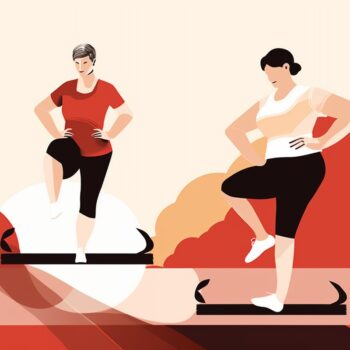 Menopause Macro Calculator
Menopause Macro Calculator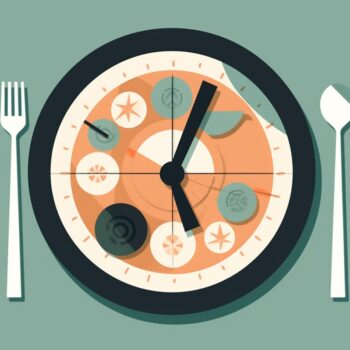 Intermittent Fasting Calculator
Intermittent Fasting Calculator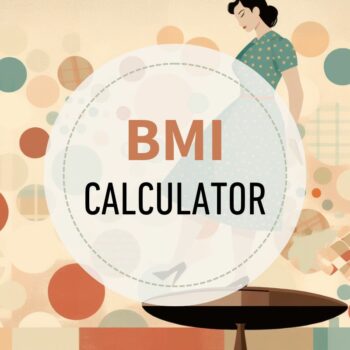 BMI Calculator
BMI Calculator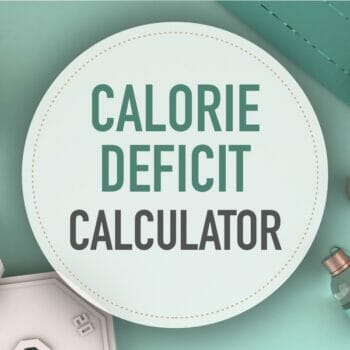 Calorie Deficit Calculator
Calorie Deficit Calculator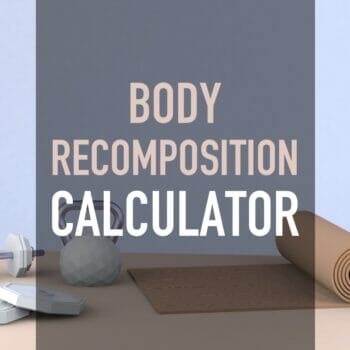 Body Recomposition Calculator
Body Recomposition Calculator
Hi, I had thyroidectomy 6 months ago (cancer) and Im lost when it comes to trying to lose the 20lbs Ive gained over the past year from this dreaded thyroid. Im a 47yrs old female 5’3 and active. Every Mon&Wed I do spin and body pump and the other days I walk between 5-10 miles weather permitting. Currently I raised my calories (I purchased MFP) to1600 because 1200 was not working at all I was always hungry. I still only manage to eat 1300 to 1400 on a good day even though Im set at 1600 now. However, on Mon &Wed I will add a little more food but I end up going either over on fat or carbs never protein. I gain and lose the same 2-3 pounds it feels like ground hog day everyday..flustrating.
My question is would my Macros be different then someone with a functioning thyroid? And if so how would I figure this out.
Thanks,
Grace
Hi Grace, So sorry to hear about your health issues and yes, thyroid issues can make it harder to lose weight. First of all, it’s important that you are getting regular blood tests to ensure the hormone replacements are at the levels they should be in your blood stream. Secondly, I’ve worked with several clients now with thyroid issues and they all did better with fewer carbs. You would need to adjust your macros so that carbs aren’t the dominant macro.
Thanks Ted, My bloodwork has been good. Would you recommend more protein vs. Fat or even amounts of both and what would be a good % for them?
Look at doing the high protein setting, then 30% fat, and the rest carbs.
Hi There! So, I’m new to the concept of macro counting but I’m intrigued. I’m currently around 115 but i’d like to tone up. I’m 5’3″ and I work out 5/6 days a week, 20-25 minutes of cardio and about 25-30 minutes of some weight/bodyweight training of upper body, lower body and abs. I’ve put my numbers and goals into other calculators and the thing that is confusing is the carbs. I guess I’ve read so much about them at this point that I’m scared of them, but I love my apples and bananas too much to even think about ditching them and that’s what the IIFYM.com calculations would have me do. If I put in lightly active, to lose, your calculator puts me around 163g, amd 1350ish calories. A far cry from the 1200, if that, i’ve been lucky to eat some days. Regardless, I’ve heard never to go over 150g…please help. Am I correct by using lightly active?
Hi Ashley, First off, don’t be afraid of carbs. Your body runs on glucose! There’s no scientific evidence to limit someone to 150. It should be determined by a person’s unique stats and needs. i.e. protein requirements, height, weight, age, and exercise level. You may be on the borderline of moderately active. You’ll never increase your strength if you don’t give your muscles the raw materials to do so. I would recommend starting at the 1350 level and then go from there as your body adjusts to being properly fueled again. Set yourself free from food restrictions 🙂
Thank you very very much Ted! I’ve decided your website is the one that I’m going to check in on every once in a while for my information. The more I look at things the more overwhelmed I become. Setting myself free will be a wonderful feeling.
Great! Please also check out my books as they are full of information to help you be successful. 🙂
Another question, do you have to hit the exact macros every day? I know I want to be sure to hit my protein, but sometimes I may be off on my carbs or fat…will that be detrimental to results?
You can drive yourself crazy trying to be exact and this can also become an obsession. I tell people to shoot to be within 5 grams plus or minus of your targets. Your fiber consumption usually negates any extra calories slight overages cause.
I am trying to add my height in and no matter which way I try, it won’t seem to work. Any tips?
Hi Jennifer, Which device/ browser are you using?
Hi there! I was hoping you could give me some insight on reverse dieting (post show). My goal would be to stay as lean as possible while maintaining a lower (but healthy) BF%. Thank you
Hello Ted,
How does “lean mass” setting corespond for Basic Formula?
I’ve noticed, that protein grams stay the same, and fats percentage stays at 25%.
I need a formula, how do the carbs change.
Thanks
Hi Rimvydas, The lean mass setting uses a formula that takes into account that muscle is active tissue and burns more calories even at rest than does fat tissue. Therefore, those with higher lean mass and lower body fat will need more calories than someone who is a similar weight but has a lower lean mass and higher body fat percentage. Protein is tied to your body weight in the calculation and fat is capped at 25%, the rest would be eaten as carbs.
((10 x weight (kg) + 6.25 x height (cm) – 5 x age (y) + 5)*1.55)*1.2
this is the formula for moderate activity male trying to gain weight, but where does the body fat percentage go in this equation, in order to get “lean mass” macros?
((10 x weight (kg) + 6.25 x height (cm) – 5 x age (y) + 5)*1.55)*1.2
this is the formula for moderate activity male trying to gain weight, but where does the body fat percentage go in this equation, in order to get “lean mass” macros?
I was following a different site, iifym.com and your ratios and calories are much higher. Your rest day calculation was about how much they gave me everyday. I do work out, crossfit 4-5 days a week. I am a little nervous about gaining weight but I also feel like I was under eating on that program. Any thoughts?
Hi Laura, It’s quite possible, their calculator can be a bit complicated and I think they average out calories across a whole week while we give you the amount needed in a specific 24 hour period. What are your goals?
First, I am so grateful you wrote back and I can’t believe how quickly. Very impressive. My goal is to tone up and slim down. Lately I just feel bulky. But I also don’t want to be hungry all the time. The plan I am doing right isn’t working. I am starving. Today I started your macros. But I am still not sure if what I am doing is correct.
Happy to help! Are you doing the 10% deficit or the 20% (“lose”)?
10%
Cool, start with that and then go to 20% if you aren’t seeing the results you’re looking for.
I put in lightly active. I do crossfit 4-5 days a week. I am not sure how to quantify what we burn but I think on the lower end because we really only work for 20 minutes. Do you think that is right?
If you’re only doing 20 minutes then yes, lightly active sounds appropriate.
Hi ted
I am trying to lose post baby weight
Been exercising from 7 weeks post delivery – one round of t25 and one round of max 30programme. Have just started second round of max 30 and about halfway now. I am trying to eat clean but I know I can improve.
I have a 4yr old and a 7month old so I don’t always get time to eat every 3/4 hrs as I should and often have dinner very late abt 9pm. I got to sleep about midnite and only get about 4/5 hours sleep recently.
Last 2 weeks have started to use mfp which has helped me track my food and eat less unhealthy foods.
I have seen some weight loss as my pre -preg clothes fit better but not seen any difference on the scales except initial weight loss of one stone after birth.
I am approx 154cm and weigh 70kg and would like to lose at least one and a half to 2 stone.
I have set my calculation to light activity and it allows me 1470 cals and I calculate an extra 250 cals for workout days but I do not have a hr monitor so cannot accurately decide how many cals I burn when exercising.
Feel as if I have been trying hard to lose weight and not made much progress at all ?
Hi Sam, If you’ve set the calculator to light activity then the exercise calories are already factored in. If you add an additional 250 then you are negating much of your calorie deficit unless if you are still breastfeeding. Then you would have to add additional calories in. Sleep is also a huge factor and way more important than frequency of meals.
Thanks for your quick reply!
Mfp was calculating I would need 1480 cals to lose approx 1.5pounds per week and then I was adding 250 cals for exercise.
I have re-adjusted my goals to approx 1400 for workout days and 1200 for non workout days and chnged the macros as needed.
Would still b ok to eat 1400 for non workout days though? I’m usually up on my feet most of the day running about after the kids!
Not bfeeding so dnt need any additional cals.
Can’t do much about the sleep at the moment ?
Does having dinner late make a big impact – usually dnt go to bed till a few hrs Aftr it and normally its fish/chicken and veg?
I also suffer from pcos – I lost about 4/5 stone to get to approx 9/10 stone when I was younger and it has been quite stable after the birth of my kids however Could post preg hormones also be a factor?
I lost over 3 stone over about a year after my 1st son and thought I would be quicker to lose weight this time round as I had less to lose?
I do insanity max 30 5 times a week for 30-40 mins: should I be adding anothr day or mixing 3days hiit with a couple days of only weights?
Thank you so much for all your help as I feel a bit lost and getting really down with lack of progress but do not want to give up!
According to our calculator, although I don’t know your age, you should be consuming around 1280 on rest days and about 1530 on exercise days. Eating late isn’t a huge factor as long as all your calories aren’t eaten at that time and it would be good to switch up your exercise if you’ve been doing the same thing for awhile. As we age, it does get harder to lose and hormones do play a factor for sure. I think being consistent, switching up your exercise and eventually getting more sleep will help you see the results you’re looking for.
Thanks so much for all your help and advice – I really appreciate it!
Hi Ted –
I am 36 year old female, with current weight of 138 lbs and height 5′ 1″. I work 9 to 5 in a sedentary job but makes sure to add 30 minutes of exercise everyday(any of the beachbody programs). I selected my activity level as ‘light activity’ and want to lose 10%, my calorie count came to 1631, that is way high than I am used to. I have been trying to lose weight for years now, though I have come a long way in terms of adopting healthy life style and stronger body, my weight has not budged much!
Hi there, Thanks for visiting. The “lose 10” setting actually means a calorie deficit of 10% opposed to the “lose” setting which is a 20% deficit. You would want to select that one. With that setting, I’m seeing a weight loss TDEE of 1380. If you have been undereating for a while, this could have slowed down your metabolism, which is why your weight loss has plateaued. You’ll have to eat more to get things going again.
Hey Ted!
I filled out the calculator and the calories and macros are higher than i eat now, and i’m maintaining and not losing. But my macros are set for me to lose right now. I work a half sitting half walking job, lift 6x/week for an 60-80 minutes, and do HIIT 3 times a week. What do you recommend?
Hi Jess, Did you set everything correctly? If you’ve double checked that. You may be undereating which is pretty common, especially among women who have “dieted” a long time. What are your stats and how much are you currently eating?
Hi ted,im 18 years old,66kg,169cm.
I workout every day when 4 times i lift weights (chest,arms,back,shoulders) and 3 times I’m doing an 1 hour of hard cardio combined with 30m of legs workout(3-4 exercises),what would you say my activity level is?and if i want to burn 2-3% of fat without lose more weight and muscle what should i do?
Hi Shay, It sounds moderate or maybe very active. A tad hard to tell based on your description. As for losing fat and adding some muscle you really have to find a good balance between not eating too much or too little. I’ve written an article about it here: https://healthyeater.com/gain-muscle-lose-fat-iifym
Thanks men,about serving help to all of us.
You are a great person!
Hi Ted, I was just wondering if you could help with my activity level, I have a desk job 9-5:30 however I walk to work 20-25 mins and take a 35-45 min walk On my lunch break, as it’s getting lighter in the evenings too I will also walk home, I also weight train 5 times a week and cardio 4 times would you say I’m moderate or very? Weekends I’m much lazy other than if I go to the gym
Hi Hayley, It seems like your activity is pretty varied. You may want to do a fluid approach, where you use sedentary as your base and then add in exercise as you do it each day.
Hi Ted,
I am 25, 5ft2, 186 lbs, and my ideal weight is 125-130 lbs. I am Transmale and have been on testosterone for almost 3 years, so my hormonal level is male. I have been trying to walk 3 times a week for 30-60 minutes and 4 days a week I usually walk a lot on school campus and climb 10-20 flights of stairs. I have just started calculating macros but I keep getting different results from everywhere.
– One site said I should eat ~2000 calories, 186p, 93f, 116c.
– IIFYM is using the desired weight as my macro goal, so 1625 calories, 126p, 71f, 126c.
– Then here it says 1638 calories, 153p, 46f, 154c
The thing is that the IIfym seems more attainable because the most protein I managed this week was 144g. I am already eating so much more than I am used to and I am having 2 protein shakes a day, 3 snack times, and then a solid meal. I also was wondering about the carb/fat ratio. Why so much carb in relation to fat? And do the carbs already factor in fiber? The problem I am having with IIFYM is that I am going over the carbs by quite a lot because they include fiber, but without fiber I am easily under that carb goal.
Thank you,
Luke
Hi Luke, You can set our calculator to low protein which would be fine since it still would be in line with your lean muscle mass needs. The carbs here are technically just counting carbs that provide energy so most fiber doesn’t count. So, you could subtract about 3/4 of your fiber grams which would allow for more digestible carbs. Our fat allotment is set at 25% of your total caloric intake, other sites use a higher base setting. Therefore, this makes your carbs higher, but they are the body’s primary and preferred energy source and there is no scientific evidence that suggests that carbs make you gain weight or cause you to not lose weight as long as they are eaten in relation to your goal TDEE. I hope this helps clear things up a bit.
Thank you so much for the fast reply, this does help a lot!